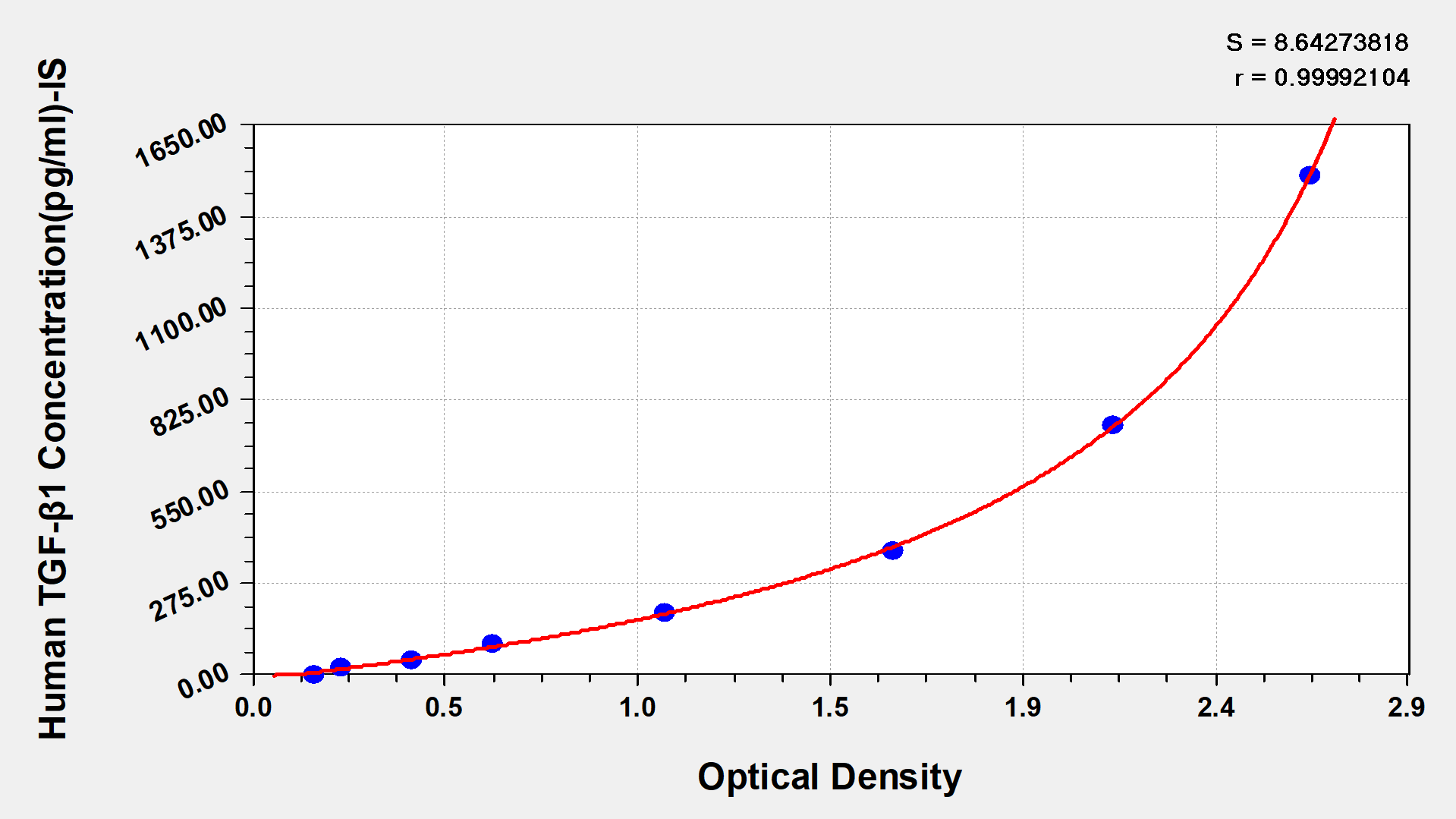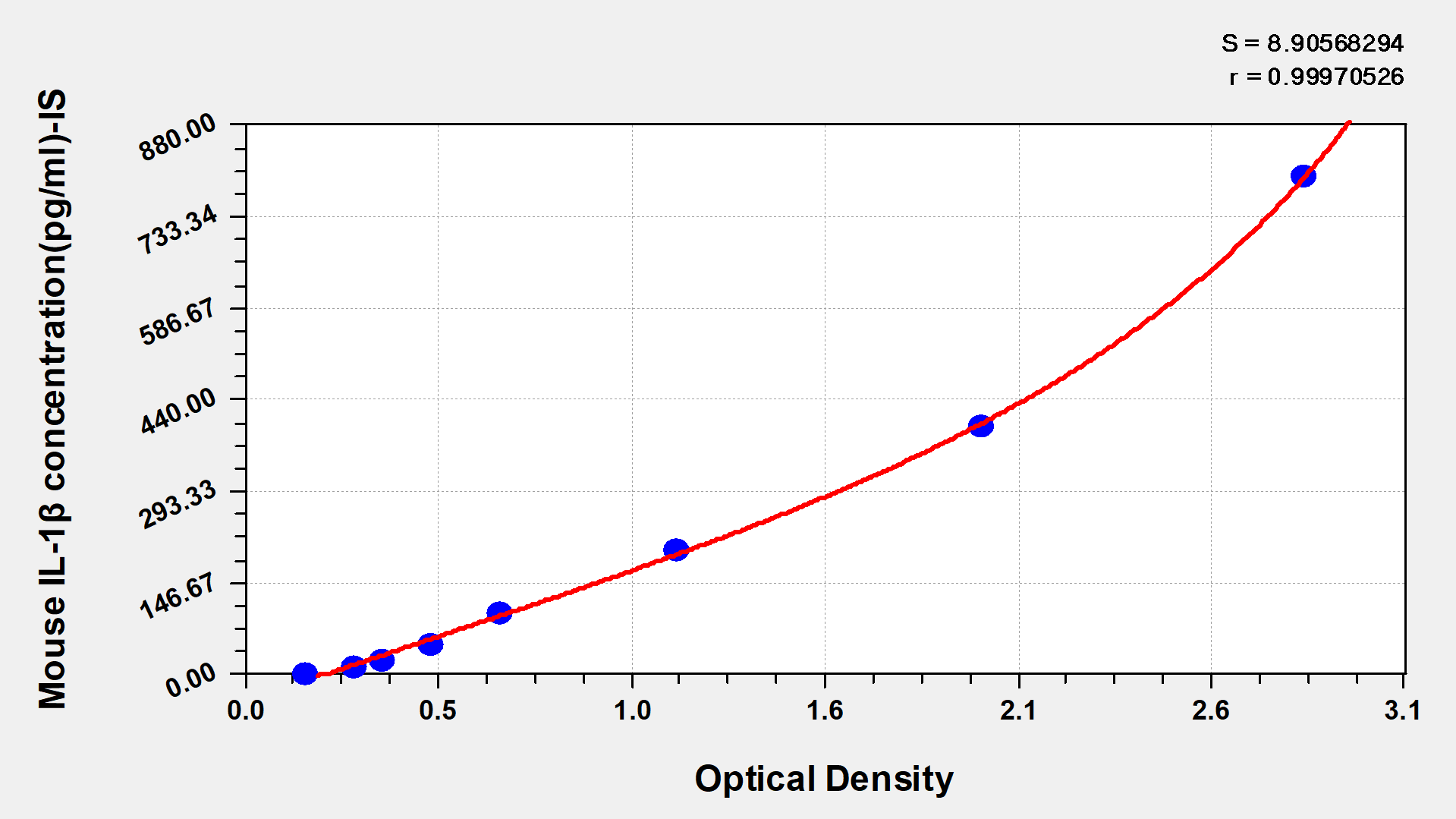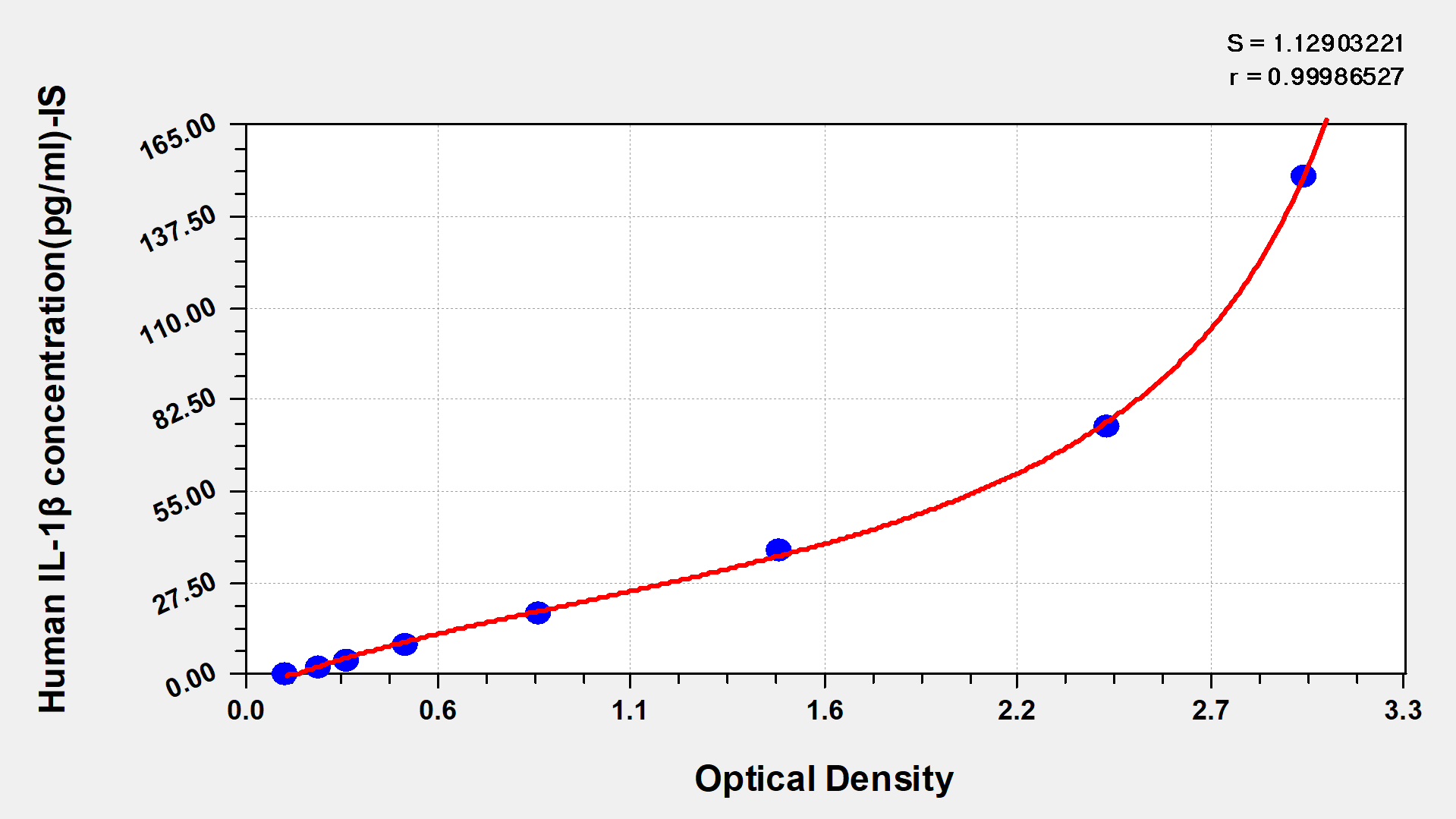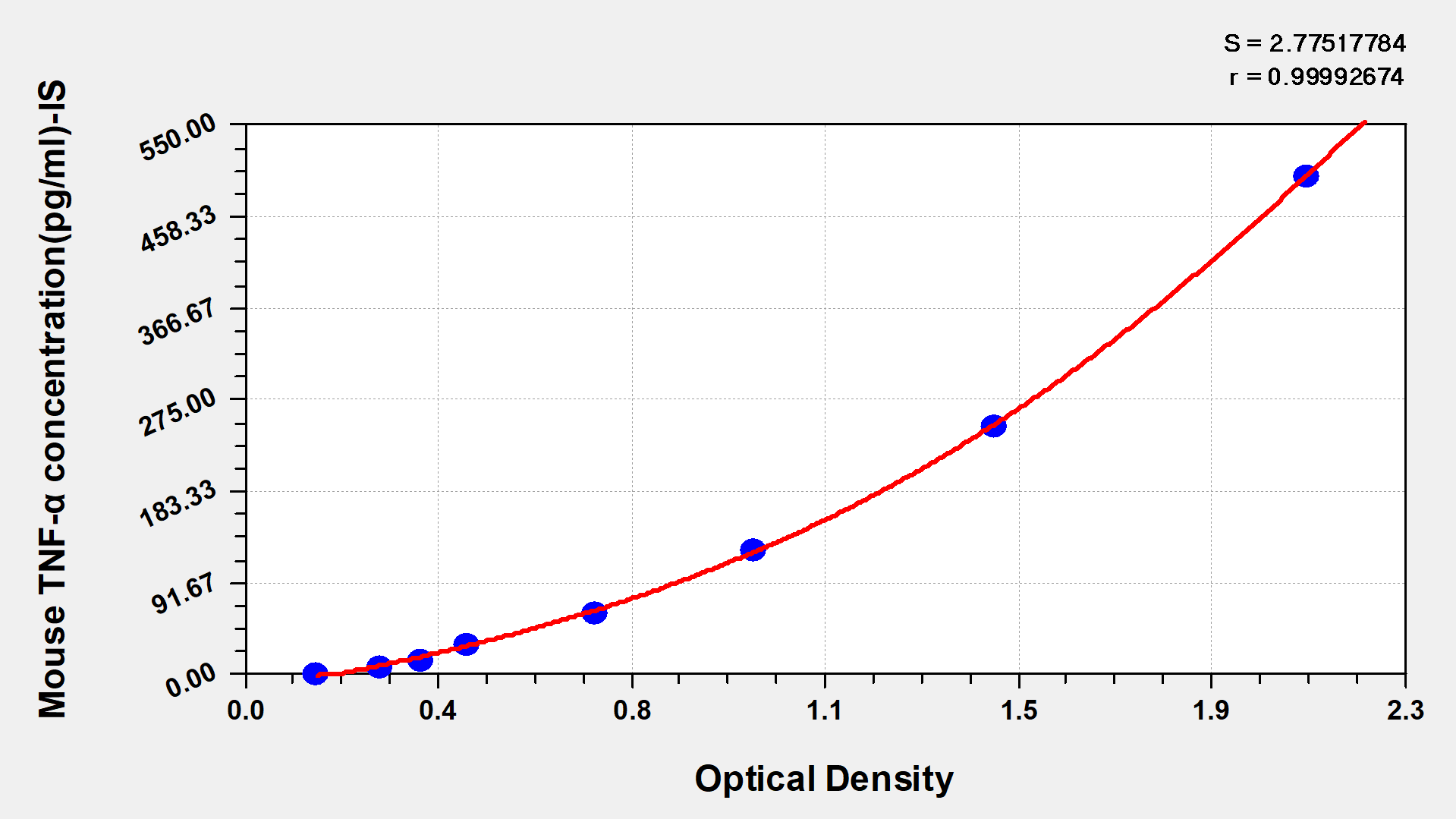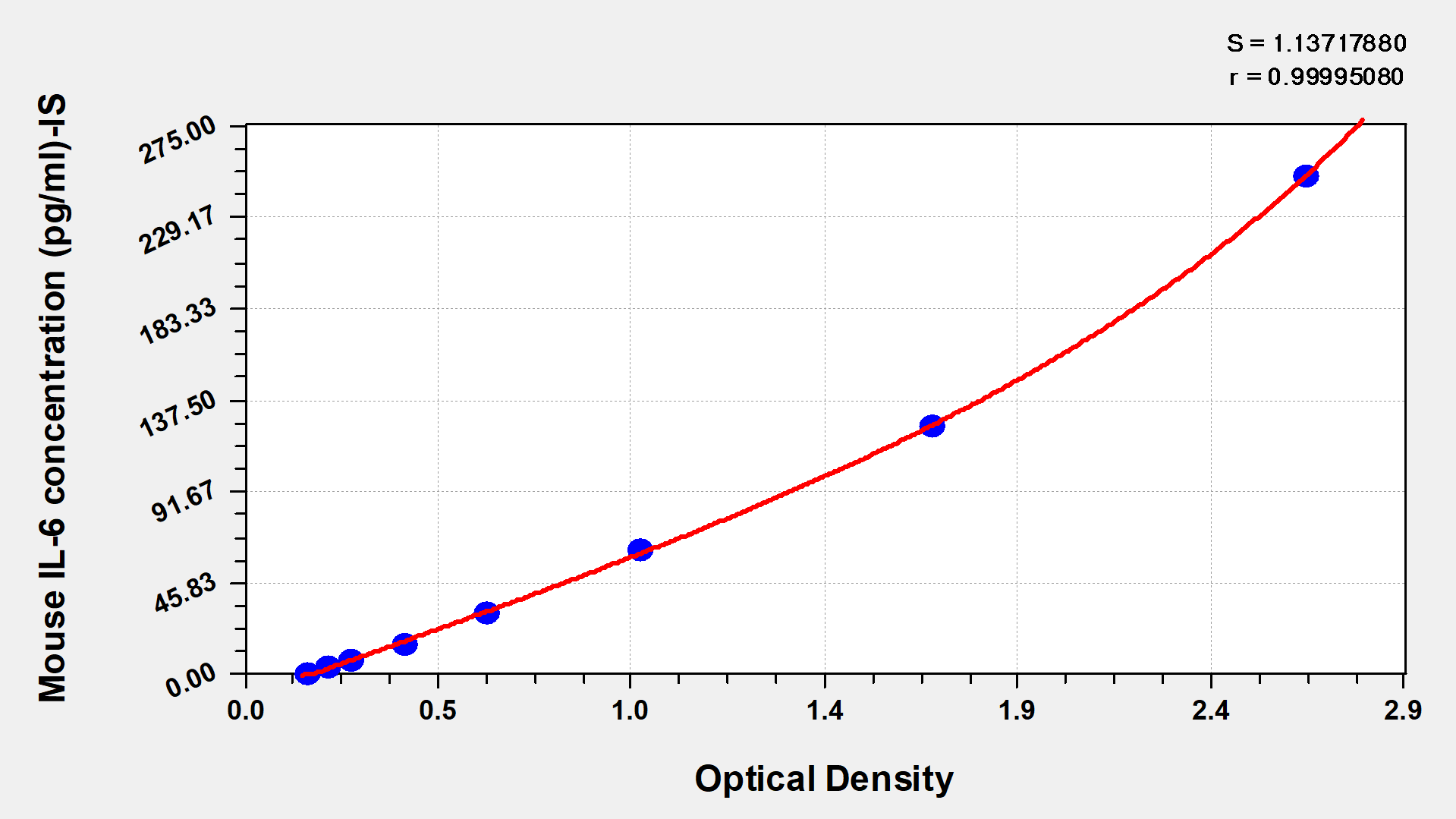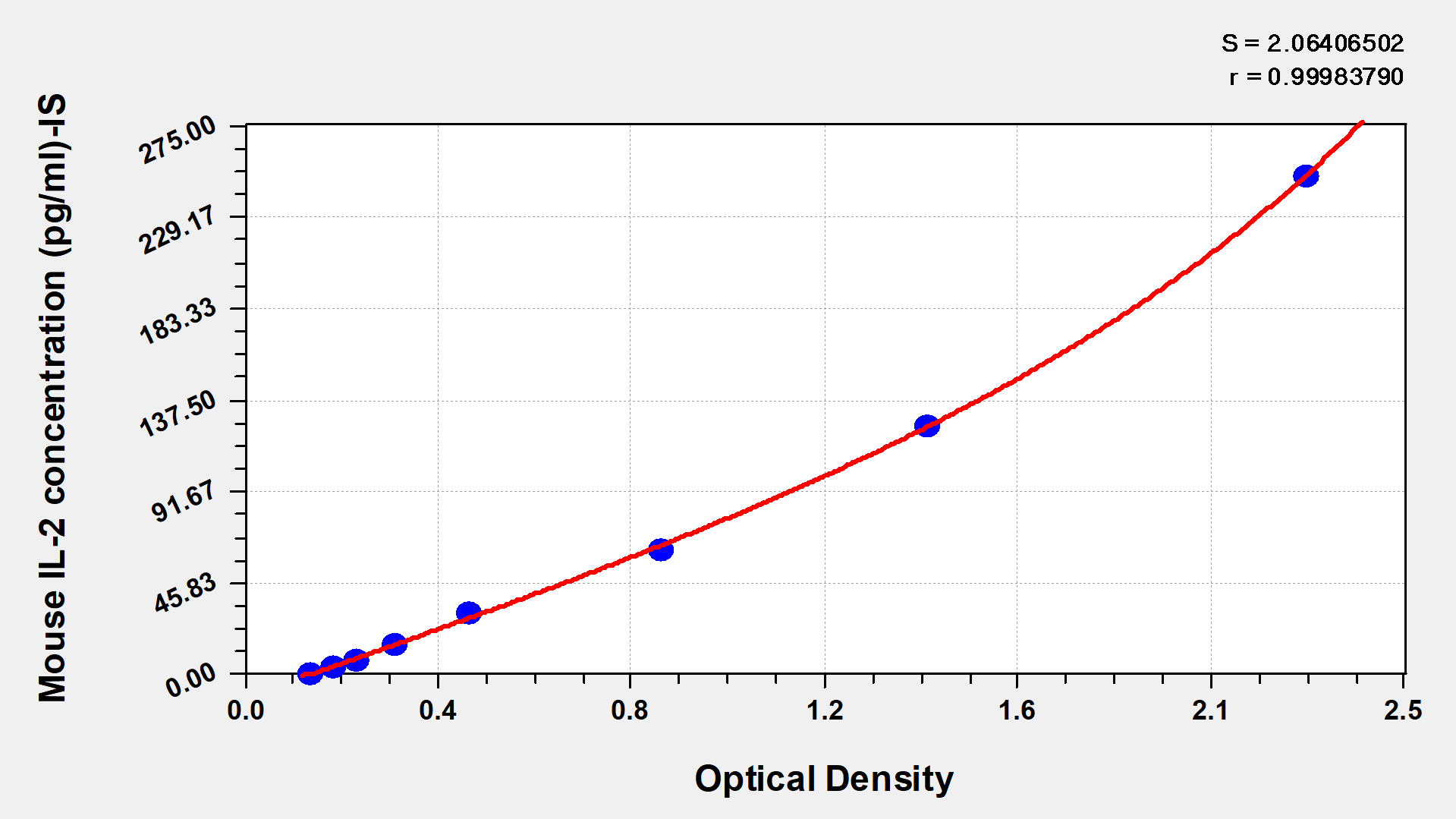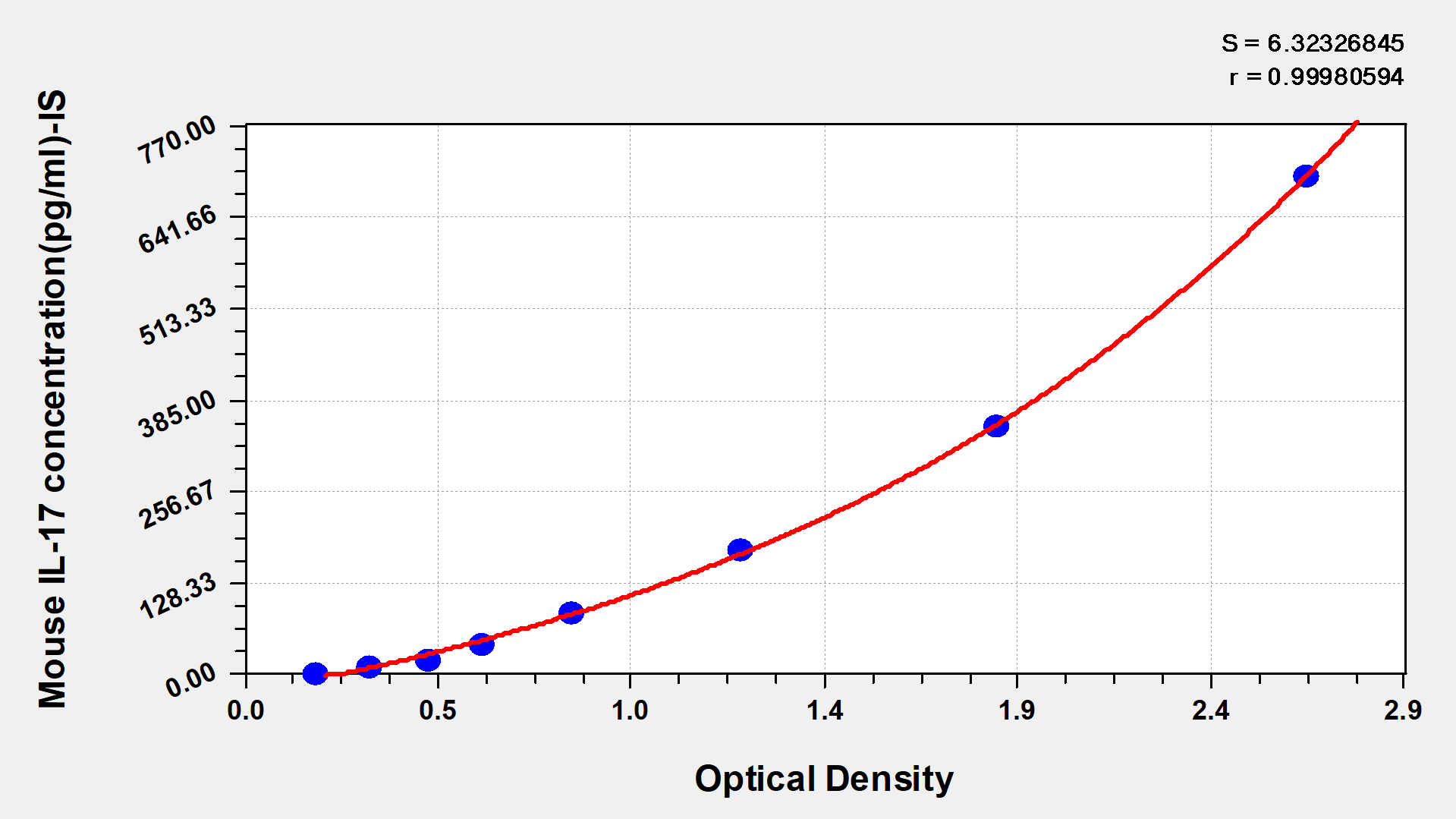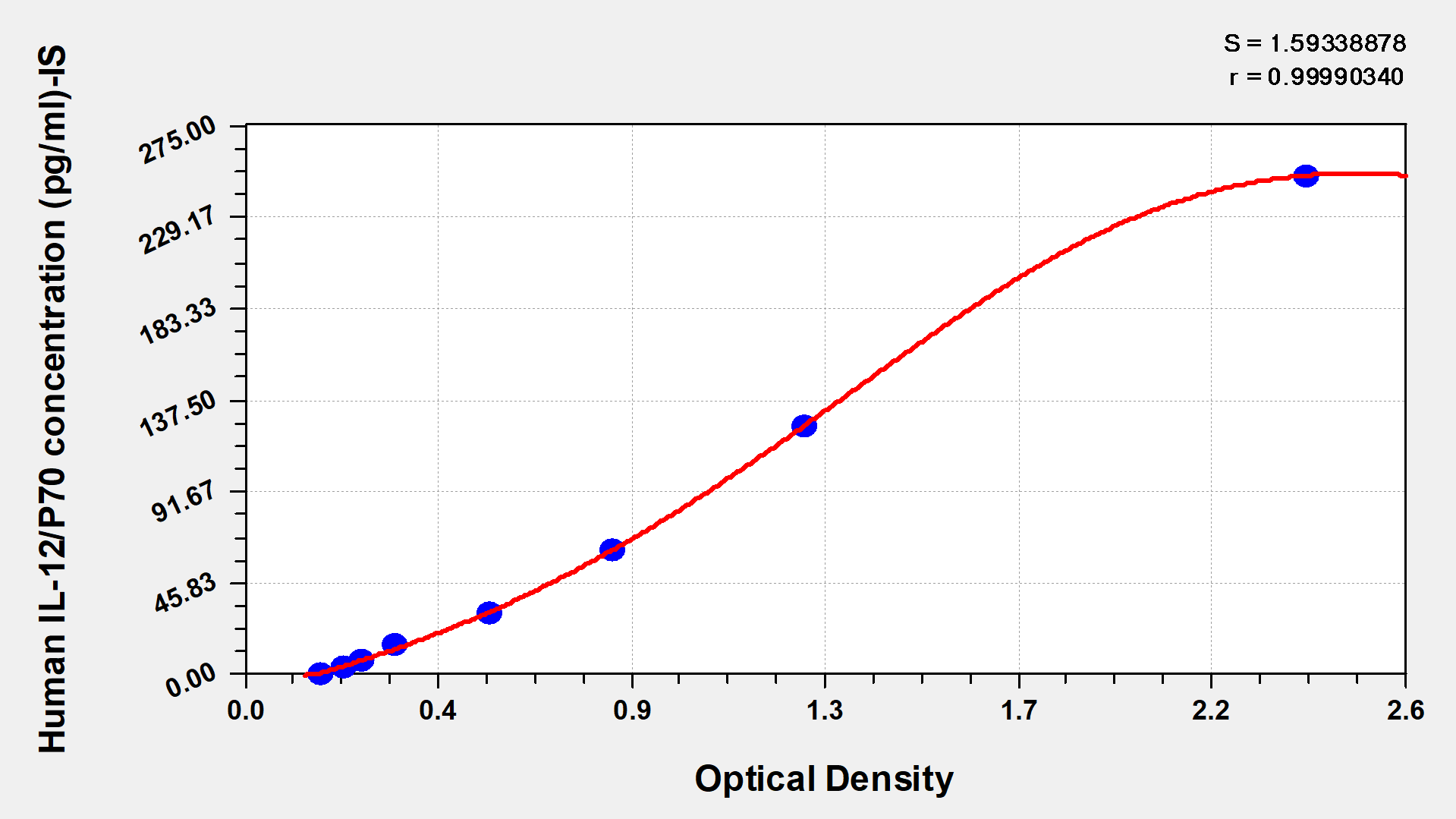Human major histocompatibility complex, class I, E (HLA-E) ELISA kit
-
中文名称:人类白细胞抗原E(HLA-E)酶联免疫试剂盒
-
货号:CSB-EL010507HU
-
规格:96T/48T
-
价格:¥3600/¥2500
-
其他:
产品详情
-
产品描述:CUSABIO人类白细胞抗原E(HLA-E)酶联免疫检测试剂盒(货号:CSB-EL010507HU),基于双抗体夹心法原理实现定量检测,适用于分析血清、血浆、细胞培养上清及组织匀浆等多种样本中HLA-E蛋白的表达水平。HLA-E作为非经典MHC-I类分子,在免疫调节中发挥重要作用,通过与NK细胞表面抑制性受体CD94/NKG2A相互作用调控天然免疫应答,其表达水平变化与病毒感染、肿瘤免疫逃逸等病理过程密切相关。本试剂盒检测范围为31.25-2000 pg/mL,灵敏度达31.25 pg/mL,通过预包被特异性抗体实现高灵敏度捕获,结合检测抗体与酶标系统完成精准定量分析,操作流程兼容常规实验室条件。该产品可为研究HLA-E在免疫调控机制、病原体感染宿主互作、肿瘤微环境免疫抑制效应等领域的表达动态提供可靠工具,尤其适用于探索跨膜蛋白在细胞表面呈现与可溶态形式的功能差异,为免疫相关疾病的基础研究及药物开发提供数据支持。
-
别名:HLA-E ELISA Kit; HLA-6.2 ELISA Kit; HLAEHLA class I histocompatibility antigen ELISA Kit; alpha chain E ELISA Kit; MHC class I antigen E) [Cleaved into: Soluble HLA class I histocompatibility antigen ELISA Kit; alpha chain E ELISA Kit; sHLA-E)] ELISA Kit
-
缩写:
-
Uniprot No.:
-
种属:Homo sapiens (Human)
-
样本类型:serum, plasma, cell culture supernates, tissue homogenates
-
检测范围:31.25 pg/mL-2000 pg/mL
-
灵敏度:7.81 pg/mL
-
反应时间:1-5h
-
样本体积:50-100ul
-
检测波长:450 nm
-
研究领域:Immunology
-
测定原理:quantitative
-
测定方法:Sandwich
-
精密度:
Intra-assay Precision (Precision within an assay): CV%<8% Three samples of known concentration were tested twenty times on one plate to assess. Inter-assay Precision (Precision between assays): CV%<10% Three samples of known concentration were tested in twenty assays to assess. -
线性度:
To assess the linearity of the assay, samples were spiked with high concentrations of human HLA-E in various matrices and diluted with the Sample Diluent to produce samples with values within the dynamic range of the assay. Sample Serum(n=4) 1:1 Average % 93 Range % 85-97 1:2 Average % 98 Range % 90-102 1:4 Average % 95 Range % 84-99 1:8 Average % 103 Range % 95-107 -
回收率:
The recovery of human HLA-E spiked to levels throughout the range of the assay in various matrices was evaluated. Samples were diluted prior to assay as directed in the Sample Preparation section. Sample Type Average % Recovery Range Serum (n=5) 99 88-104 EDTA plasma (n=4) 97 88-100 -
标准曲线:
These standard curves are provided for demonstration only. A standard curve should be generated for each set of samples assayed. 
pg/ml OD1 OD2 Average Corrected 2000 1.976 1.943 1.960 1.788 1000 1.499 1.446 1.473 1.301 500 1.018 0.987 1.003 0.831 250 0.741 0.712 0.727 0.555 125 0.457 0.435 0.446 0.274 62.5 0.335 0.323 0.329 0.157 31.25 0.249 0.244 0.247 0.075 0 0.175 0.169 0.172 -
数据处理:
-
货期:3-5 working days
相关产品
靶点详情
-
功能:Non-classical major histocompatibility class Ib molecule involved in immune self-nonself discrimination. In complex with B2M/beta-2-microglobulin binds nonamer self-peptides derived from the signal sequence of classical MHC class Ia molecules (VL9 peptides). Peptide-bound HLA-E-B2M heterotrimeric complex primarily functions as a ligand for natural killer (NK) cell inhibitory receptor KLRD1-KLRC1, enabling NK cells to monitor the expression of other MHC class I molecules in healthy cells and to tolerate self. Upon cellular stress, preferentially binds signal sequence-derived peptides from stress-induced chaperones and is no longer recognized by NK cell inhibitory receptor KLRD1-KLRC1, resulting in impaired protection from NK cells. Binds signal sequence-derived peptides from non-classical MHC class Ib HLA-G molecules and acts as a ligand for NK cell activating receptor KLRD1-KLRC2, likely playing a role in the generation and effector functions of adaptive NK cells and in maternal-fetal tolerance during pregnancy. Besides self-peptides, can also bind and present pathogen-derived peptides conformationally similar to VL9 peptides to alpha-beta T cell receptor (TCR) on unconventional CD8+ cytotoxic T cells, ultimately triggering antimicrobial immune response.; (Microbial infection) Viruses like human cytomegalovirus have evolved an escape mechanism whereby virus-induced down-regulation of host MHC class I molecules is coupled to the binding of viral peptides to HLA-E, restoring HLA-E expression and inducing HLA-E-dependent NK cell immune tolerance to infected cells.; (Microbial infection) May bind HIV-1 gag/Capsid protein p24-derived peptide (AISPRTLNA) on infected cells and may inhibit NK cell cytotoxicity, a mechanism that allows HIV-1 to escape immune recognition.; (Microbial infection) Upon SARS-CoV-2 infection, may contribute to functional exhaustion of cytotoxic NK cells and CD8-positive T cells. Binds SARS-CoV-2 S/Spike protein S1-derived peptide (LQPRTFLL) expressed on the surface of lung epithelial cells, inducing NK cell exhaustion and dampening antiviral immune surveillance.
-
基因功能参考文献:
- Data suggest that, although different T-cell receptors adopt distinct docking modes on HLAE, energetic basis of T-cell receptor interaction is defined by set of conserved HLAE residues. PMID: 28972140
- It indicates that HLA-E expression may have an immunomodulatory effect and a possible role in the severity of liver disease in chronic hepatitis C. PMID: 29951556
- HLA-E is highly represented in ovarian carcinoma suggesting a potential association with progressive disease mechanism PMID: 29499226
- Soluble HLA-E level is useful as a biomarker of disease activity and course in Takayasu arteritis patients. rs1264457 polymorphism is neither associated with susceptibility nor did it influence sHLA-E levels in TA. PMID: 28425192
- The frequency of the HLA-E*0101/*0103X genotype in male patients with Pemphigus Vulgaris was found to be significantly higher than in men in the control group (P=0.023). PMID: 29252170
- These data suggest that HLA-E overexpression frequently occurs in renal cell carcinoma and correlates with reduced immunogenicity PMID: 27589686
- HLA-E restricted CD8+ T cells may represent an important subset of pTregs, suppressing previously activated target cells. PMID: 24144875
- No specific HLA-G and HLA-E haplotypes were significantly associated with increased risk of developing severe preeclampsia/eclampsia. PMID: 27596021
- Our findings provide evidence that during renal allograft rejection HLA-E along with high numbers of mismatched HLA-class I leader peptides might represent additional targets for immune-activating responses. PMID: 27871782
- The results suggest that HLA-E allelic variants may play a role in the modulation of immune responses in the context of the inability of natural conception and establishment of a viable pregnancy. PMID: 27714943
- The prognostic benefit of natural killer cells, but not T-cells, is influenced by HLA-E expression in endometrial cancer. PMID: 29059634
- This data reinforces the presence of only two main full-length HLA-E molecules encoded by the many HLA-E alleles detected in our population sample. In addition, this data does indicate that the distal HLA-E promoter is by far the most variable segment. PMID: 28946074
- HLA-E alleles and sHLA-E levels may represent novel biomarkers for early disease progression in patients with chronic lymphocytic leukemia PMID: 27859015
- In insulitic islets from living patients with recent-onset T1D, most of the overexpressed ISGs, including GBP1, TLR3, OAS1, EIF2AK2, HLA-E, IFI6, and STAT1, showed higher expression in the islet core compared with the peri-islet area containing the surrounding immune cells PMID: 27422384
- soluble HLA-Ib molecules HLA-G and HLA-E are present in BM plasma samples in physiological and pathological conditions, and their concentration correlated with stage disease in NB patients. PMID: 27610393
- this study shows the high expression of HLA-E in actinic chelitis and in lip squamous cell carcinoma, which reflects the capacity that these pathologies have for evasion and progression PMID: 26723902
- Our study reveals that HLA-E polymorphism is associated with nasopharyngeal cancer. PMID: 26896927
- High expression of HLA-E is associated with non-small cell lung carcinoma. PMID: 26658106
- The positive correlation has been found between the HLA-E*01:01/01:03 A>G polymorphism, plasma HLA-E level, and advanced fibrosis stages in chronic hepatitis B patients. PMID: 26956431
- the promoter region of the HLA-E gene presents few and rare variable sites in Brazilian population sample. PMID: 26596885
- HLA-E regulates NKG2C+ natural killer cell function through presentation of a restricted peptide repertoire PMID: 26382247
- HLA-E is capable of presenting a highly conserved peptide from HIV-1 capsid (AISPRTLNA) that is not recognized by NKG2A/CD94. PMID: 26828202
- over-expression of HLA-E is associated with melanoma PMID: 26090591
- Peptide-induced HLA-E expression in human PBMCs is dependent on peptide sequence and the HLA-E genotype. PMID: 25735891
- this study suggests that minor histocompatibility antigens presented by HLA-E can represent an additional risk factor following lung transplantation. PMID: 26302084
- These results indicate that E*01:01 is a novel protective genetic factor in EBV-associated cHL and support a role for HLA-E recognition on the control of EBV infection and lymphomagenesis. PMID: 26261988
- HLA-E molecules traffic differently from the HLA-class I molecules and can play a fundamental role in the protection against intracellular pathogens and susceptibility to several diseases. PMID: 26310830
- Functional differences and the immunological impact of HLA-E allelic variant Arg107Gly PMID: 26552660
- increased risk of recurrent miscarriage in mothers carrying HLA-E*01:01 allele; meta-analysis PMID: 25700963
- The results derived from this study imply that HLA-E polymorphisms may influence RA susceptibility and affect clinical outcome of anti-TNF therapy in female RA patients. PMID: 26307125
- genetic polymorphism is not associated with nasopharyngeal carcinoma in China PMID: 25636564
- genetic polymorphism does not affect treatment outcome following allogeneic hematopoietic stem cell transplantation in Egyptian patients PMID: 25543014
- Monoclonal antibodies to HLA-E bind epitopes carried by unfolded beta2 m-free heavy chains. PMID: 25982269
- We identified that the HLA-E and HLA-F in gastric cancer independently affected clinical factors, including postoperative outcome PMID: 25862890
- HLA-E gene polymorphisms are associated with the development of breast cancer in women of Han polulation. PMID: 25854574
- HLA-E*0103 allele is associated with susceptibility to serous ovarian cancer in a Chinese Han population. PMID: 25711417
- Review of the impact of human leukocyte antigen molecules E, F, and G on the outcome of transplantation. PMID: 25420801
- IL-12-producing monocytes and HLA-E control HCMV-driven NKG2C+ NK cell expansion. PMID: 25384219
- novel insights in the mechanism via which HLA-E expression levels are controlled and how the cellular immune response in transplantation and cancer is influenced by HLA-E. PMID: 25413103
- Results show that HLA-E and KIR2DL4 demonstrate evidence of positive selection between human, chimpanzee and gorilla suggesting a main role for immunological adaptations linked to embryo deep invasion of the maternal endometrium during pregnancy. PMID: 25451741
- Studies suggest that HLA class I molecule HLA-E to be a ligand for the innate and adaptive immune system. PMID: 25401109
- Sera from early-onset, severely preeclamptic women directly modulate HLA-E expression in the EA.hy296 endothelial cell line. PMID: 24837231
- Findings indicate that HLA-E up-regulation in 3D-cultured cells may result in enhanced tumor resistance to NK cell-mediated immune response. PMID: 24742303
- The expression levels of HLA-G or HLA-E alone and the combined expression of both molecules were all statistically correlated with the overall survival of colorectal cancer patients. PMID: 25461612
- Transgenic hCD46/HLA-E expression reduced humoral xenoresponses since all were downregulated during ex vivo xenoperfusion of hCD46/HLA-E double transgenic pig forelimbs with human blood. PMID: 24635052
- IL-27 driven upregulation of surface HLA-E expression on monocytes inhibits IFN-gamma release by autologous NK cells. PMID: 24741633
- NKG2C receptor deletion and a functional polymorphism in its ligand HLA-E may play a role in psoriasis susceptibility PMID: 24079744
- surface HLA-E was higher on melanoma cells than on melanocytes and protected the former (6/6 cell lines) from lysis by natural killer (NK) cells, functionally counteracting co-expressed triggering ligands. PMID: 24011128
- These results indicate that generating transgenic HLA-E pigs might protect porcine grafts from, not only NK cytotoxicity, but also macrophage-mediated cytotoxicity. PMID: 23994719
- Data suggest that the cell-surface HLA class I molecules HLA-E, HLA-C, and HLA-G co-localize with each other on trophoblast cell membranes and have the potential to form preferential heterotypic associations that may be modulated by progesterone. PMID: 24006284
显示更多
收起更多
-
亚细胞定位:Cell membrane; Single-pass type I membrane protein. Golgi apparatus membrane.; [Soluble HLA class I histocompatibility antigen, alpha chain E]: Secreted.
-
蛋白家族:MHC class I family
-
组织特异性:Expressed in secretory endometrial cells during pregnancy (at protein level). The expression in nonlymphoid tissues is restricted to endothelial cells from all types of vessels, including arteries, veins, capillaries, and lymphatics (at protein level). In
-
数据库链接:
Most popular with customers
-
Human Transforming Growth factor β1,TGF-β1 ELISA kit
Detect Range: 23.5 pg/ml-1500 pg/ml
Sensitivity: 5.8 pg/ml
-
-
-
Mouse Tumor necrosis factor α,TNF-α ELISA Kit
Detect Range: 7.8 pg/ml-500 pg/ml
Sensitivity: 1.95 pg/ml
-
-
-
-



